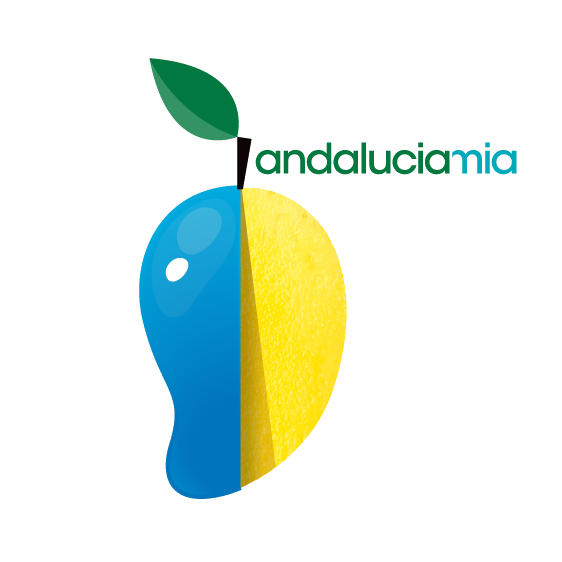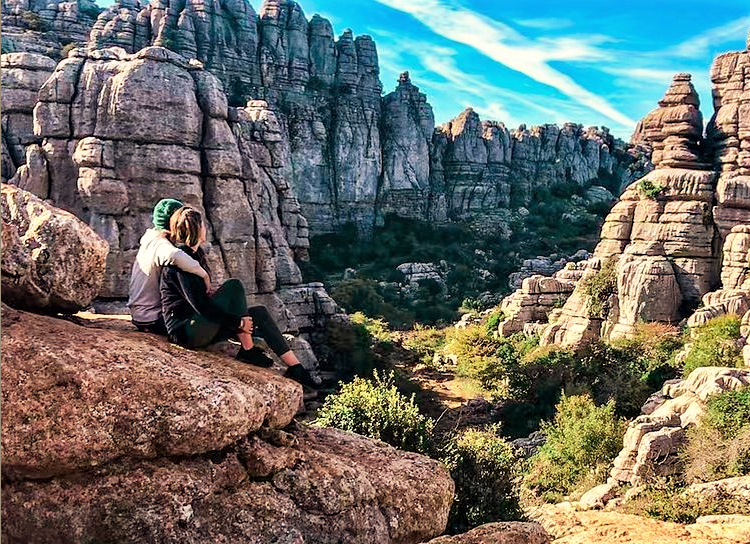El Torcal de Antequera Park – a stunning hike is waiting for you
El Torcal de Antequera hike and visit to the dolmens and the Peña de los enamorados
In this article you will find the essential information for El Torcal de Antequera hike in the park :
- A few words about Antequera and El Torcal Natural Park
- El Torcal World Heritage Site
- Hiking and visiting El Torcal Natural Park
- Photos of El Torcal Park in Antequera taken on a hiking trail
- The natural environment of El Torcal
- The Peña de los Enamorados in Antequera
- Dolmen of Menga
- Dolmen of Viera
- El Romeral, the dolmen of Tholos,
- Location of Antequera and El Torcal
- Book a guided tour of El Torcal and the dolmens
- Accommodation in Antequera
- What to visit around El Torcal
- Some useful links (car hire, other ideas for visits)

A few words about Antequera and El Torcal Natural Park
Many travellers nowadays stop off in Antequera to discover El Torcal and the dolmens.
There are several reasons for this, in addition to the exceptional beauty of these sites in the province of Malaga.
The main reason is that Antequera is the geographical centre of Andalusia. This city offers many world-renowned sites to visit.
El Torcal de Antequera is a World Heritage Site
In 2016, Unesco declared two natural monuments in the town of Antequera as World Heritage Sites:
- The mountain of La Peña de los Enamorados
- The rock formation of El Torcal
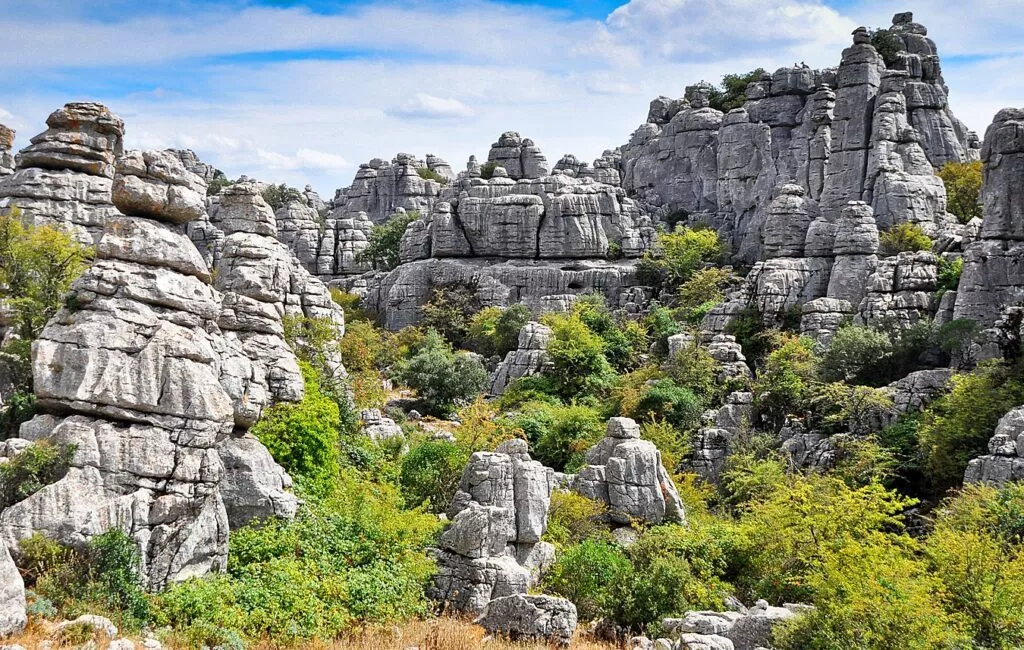
In the same year, Unesco also declared three megalithic monuments in Antequera to be World Heritage Sites:
- the Menga dolmen
- the dolmen of Viera
- and the dolmen of Tholos, El Romeral,
El Torcal Natural Park
El Torcal is a site of rare beauty and an absolute wonder of nature. It is often said that these 20km² are the most beautiful karst landscape in Europe.
It is difficult to imagine when we are there that El Torcal was under the sea 150 million years ago, and that we are now at an altitude of between 1000 and 1200 metres!
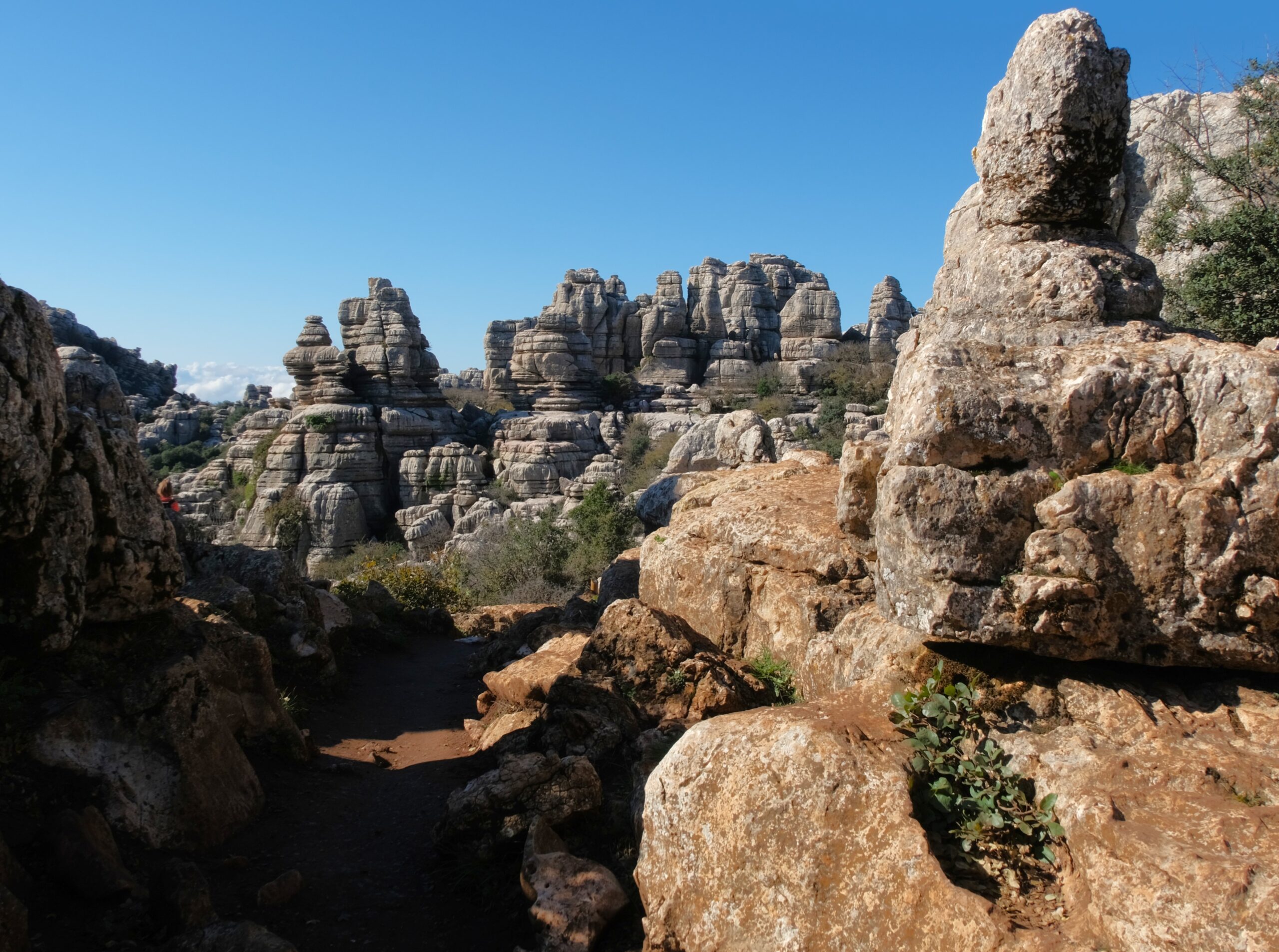
The origins of El Torcal
What happened: 150 million years ago the Thetis Sea covered this whole area. This sea extended from Cadiz to Alicante. Then, as two tectonic plates collided, this site emerged from the water over time, moving up the layers of sediment accumulated at the bottom of the sea.
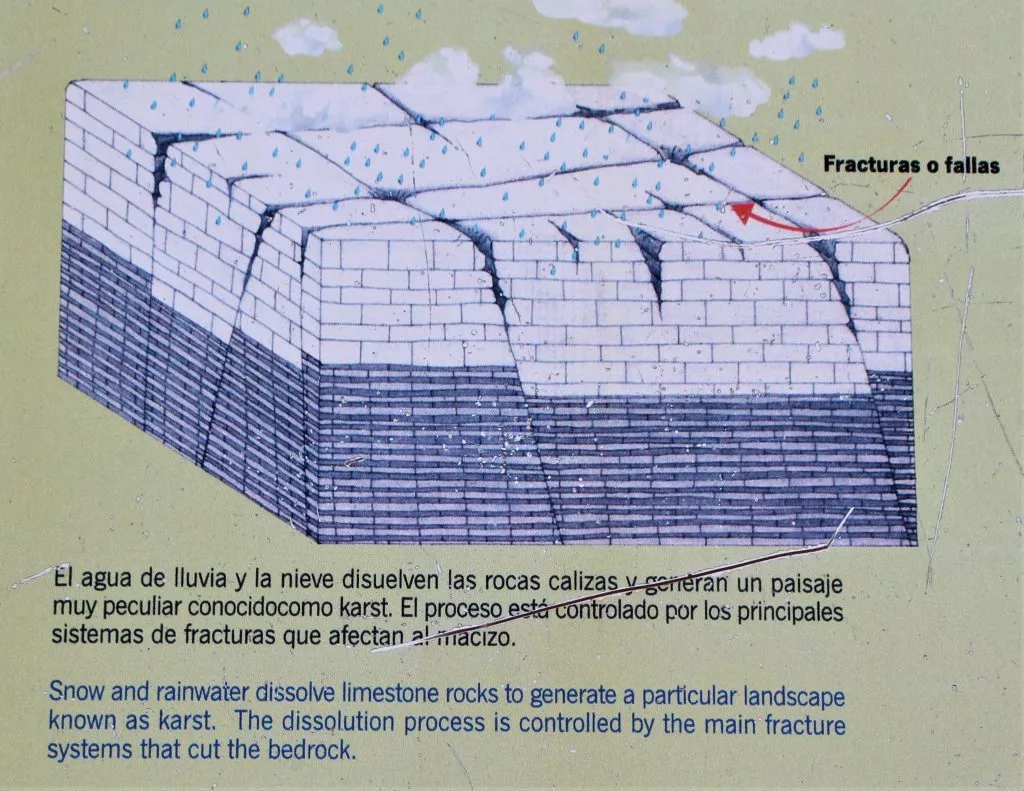
Then, time and meteorological factors such as water, ice and wind have shaped this spectacular landscape by sculpting the limestone.
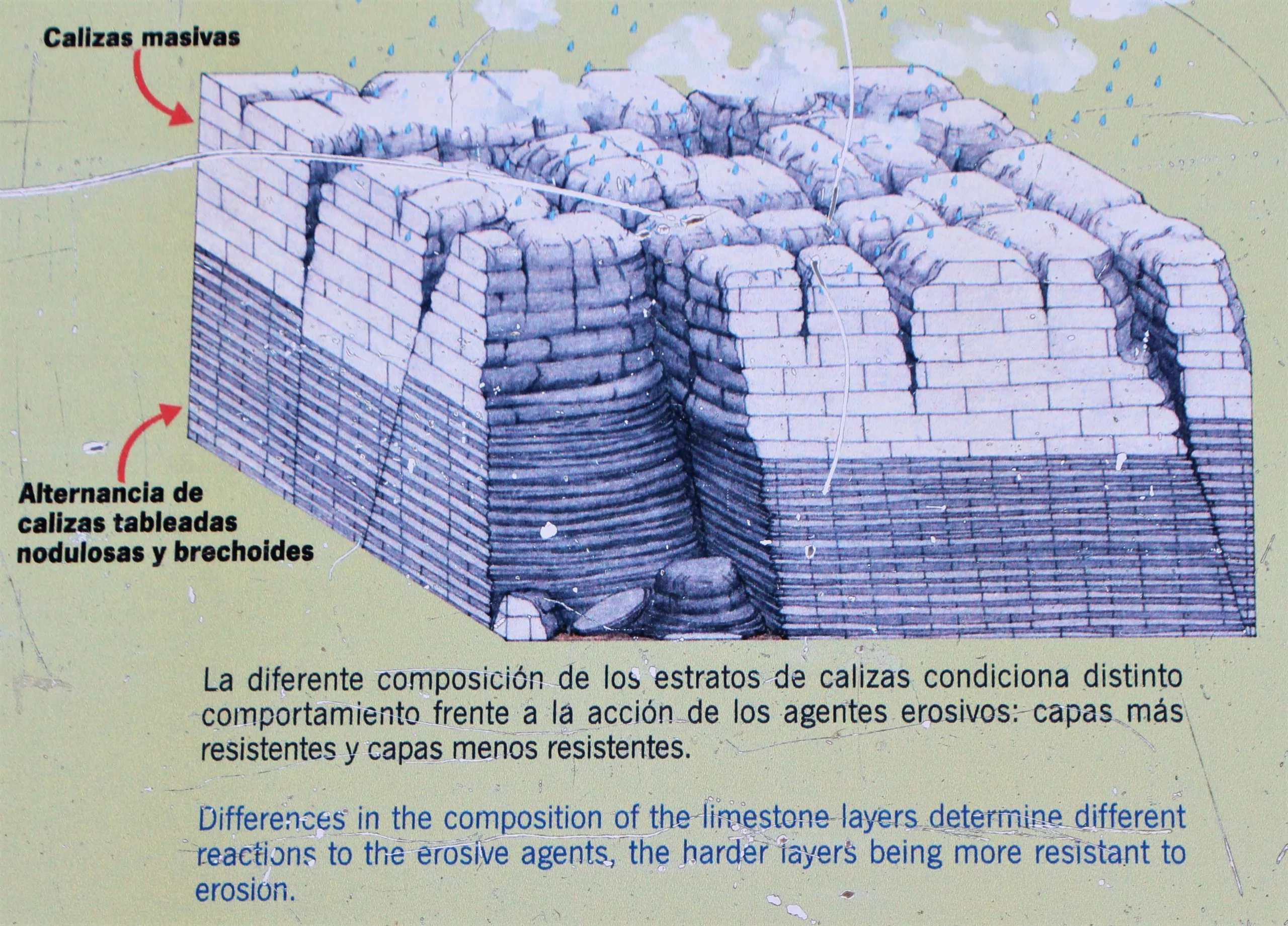
This is what gives us such a spectacle of nature today!
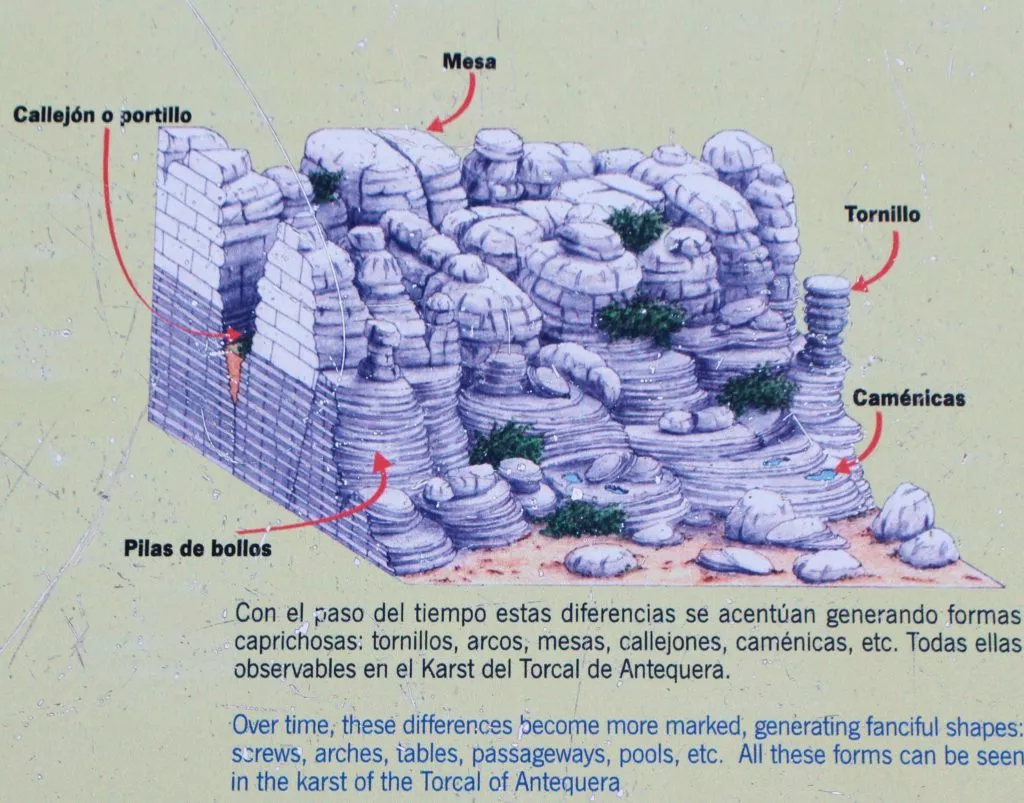
This spectacle of nature is located at an altitude of 1200 metres today.

However, walking around the park at this altitude, we can distinguish its marine origins, with the presence of numerous marine fossils (ammonites and belemnites).
The ammonite fossil, below, is found not far from the entrance to El Torcal Park:
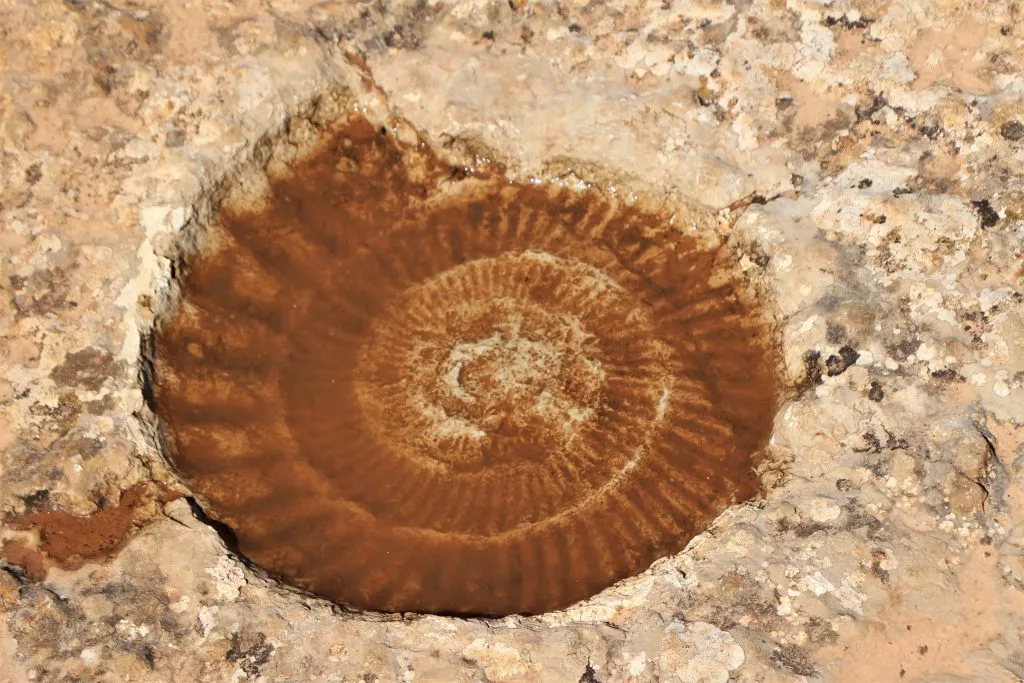
Photos of El Torcal Park in Antequera taken while hiking
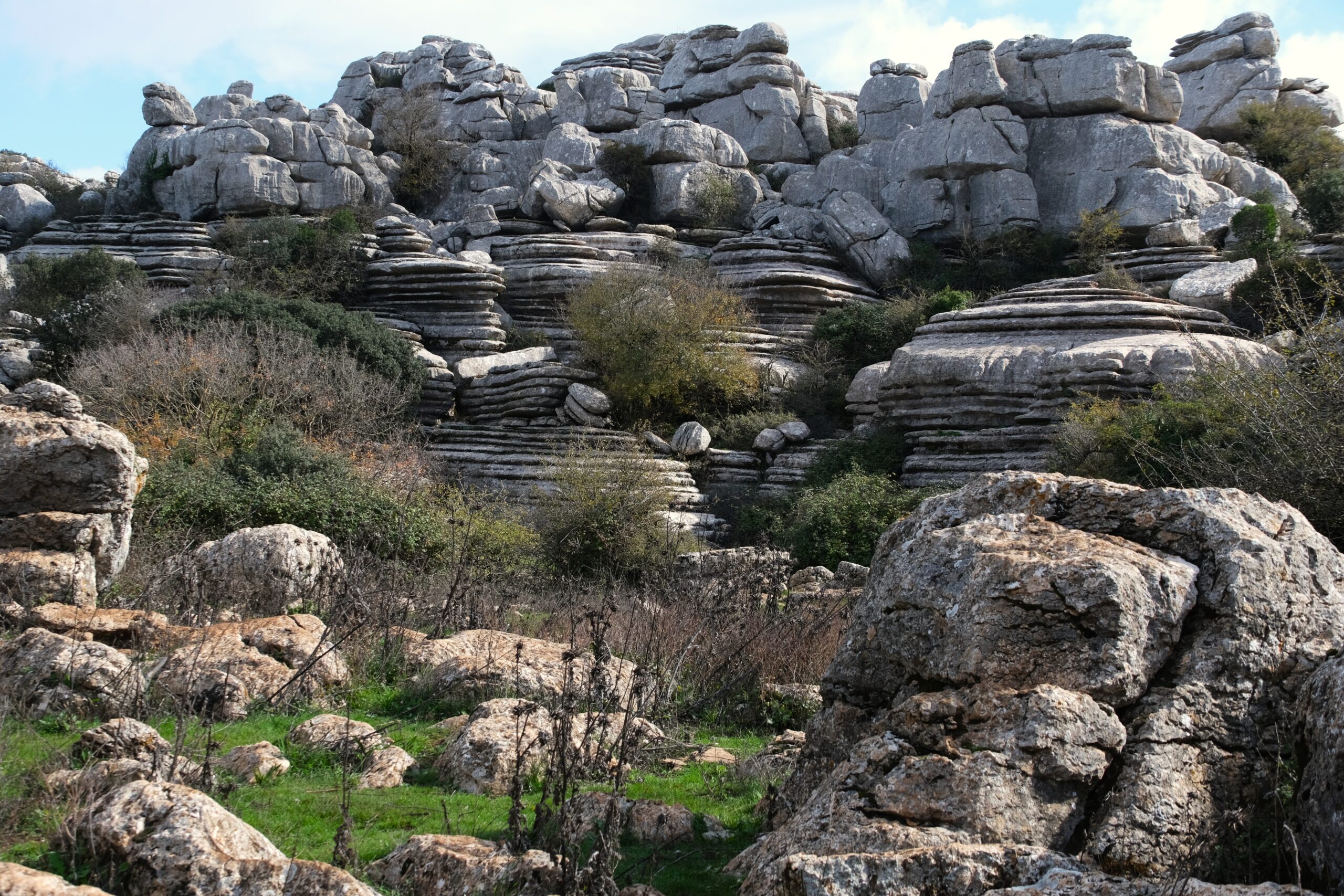

Given the wide range of different shapes that the rocks have taken, many of them now have a nickname:
El “Tornillo” (the screw)
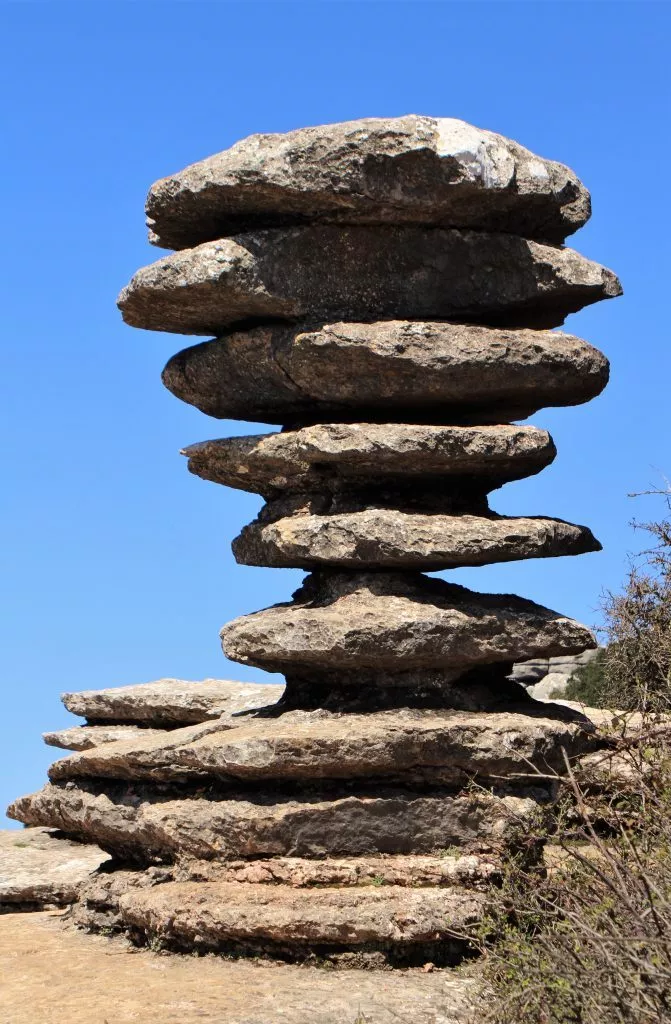
“El Sombrerito”, “El Cofre”, “El Ataúd” (the coffin), “the Sphinx”, the Indian or the Watcher,
…and King-kong
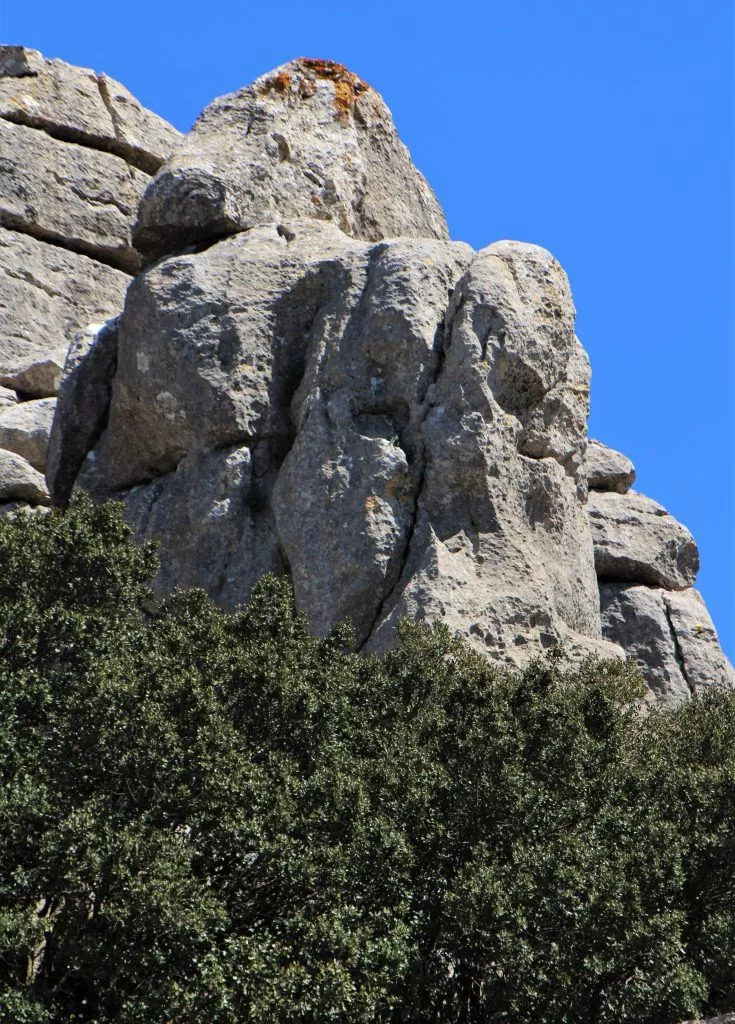
Natural environment of El Torcal is just as exceptional as the formation of this site
The flora is very varied, with up to 33 different species of orchids!
The fauna is also well represented with the Iberian ibex, the fox and the badger.
And the birds of prey are also represented with the golden eagle, the eagle owl or the griffon vulture (below, in April 2022).
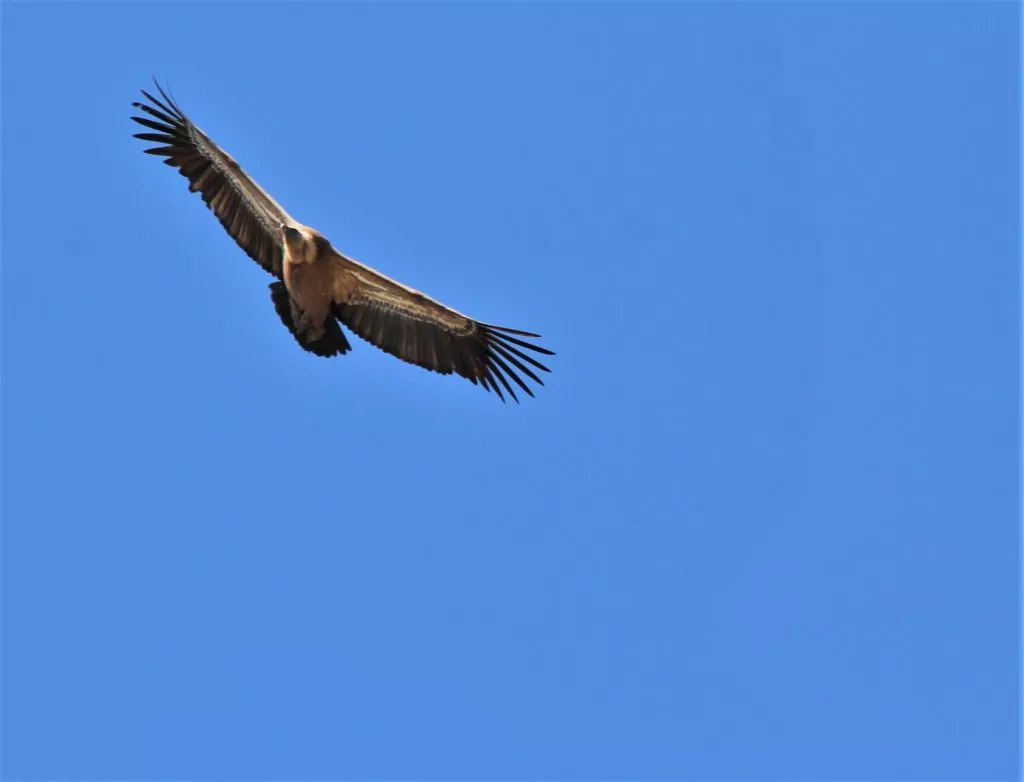

One last curiosity with El Torcal: Antequera is one of the few towns in Andalusia where the inhabitants are supplied with water directly from the mountains and not from a dam or reservoir.
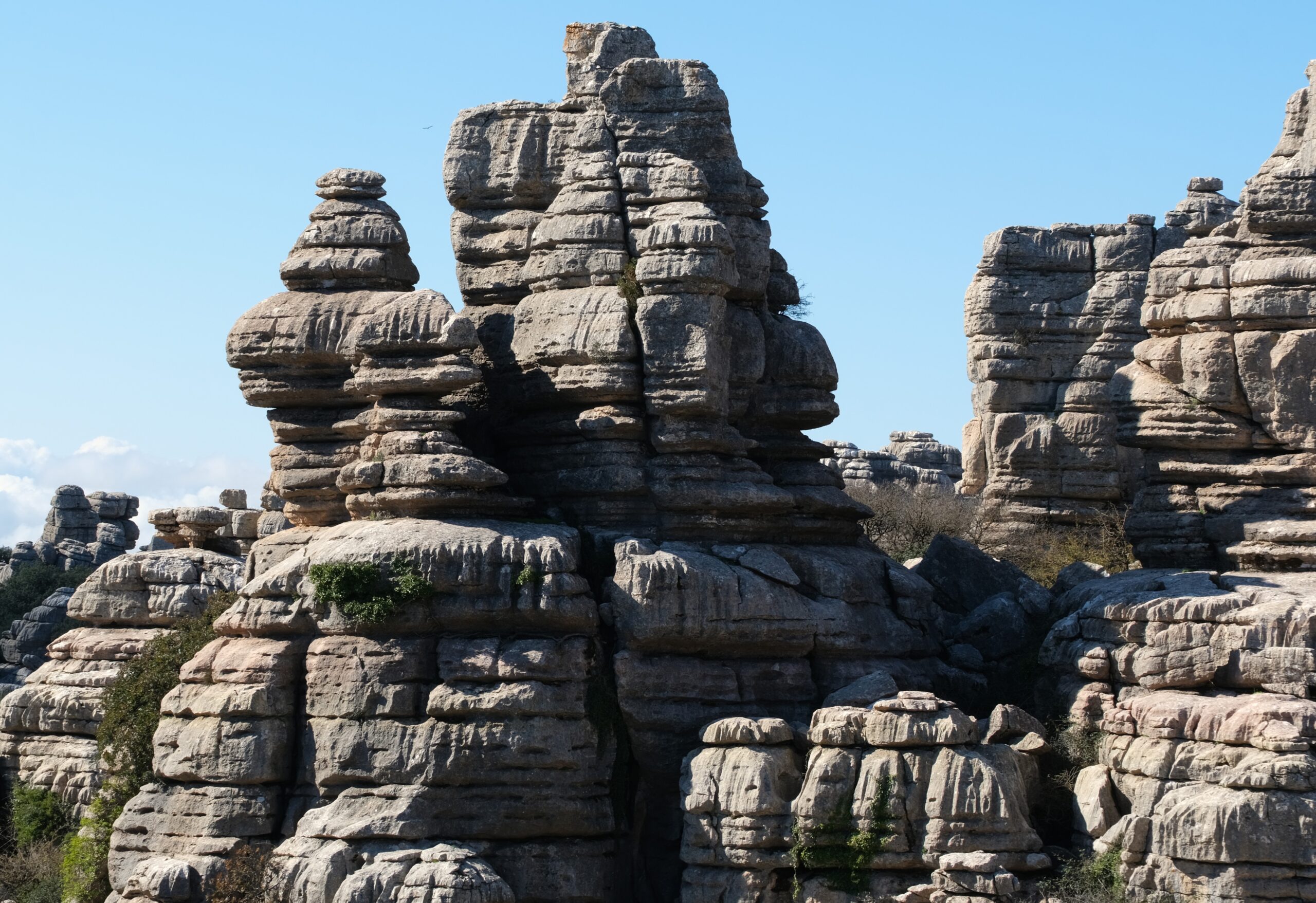
The Peña de los Enamorados in Antequera
The Peña de los Enamorados has become the iconic image of the town of Antequera.
It is also known as the “Indian head”.
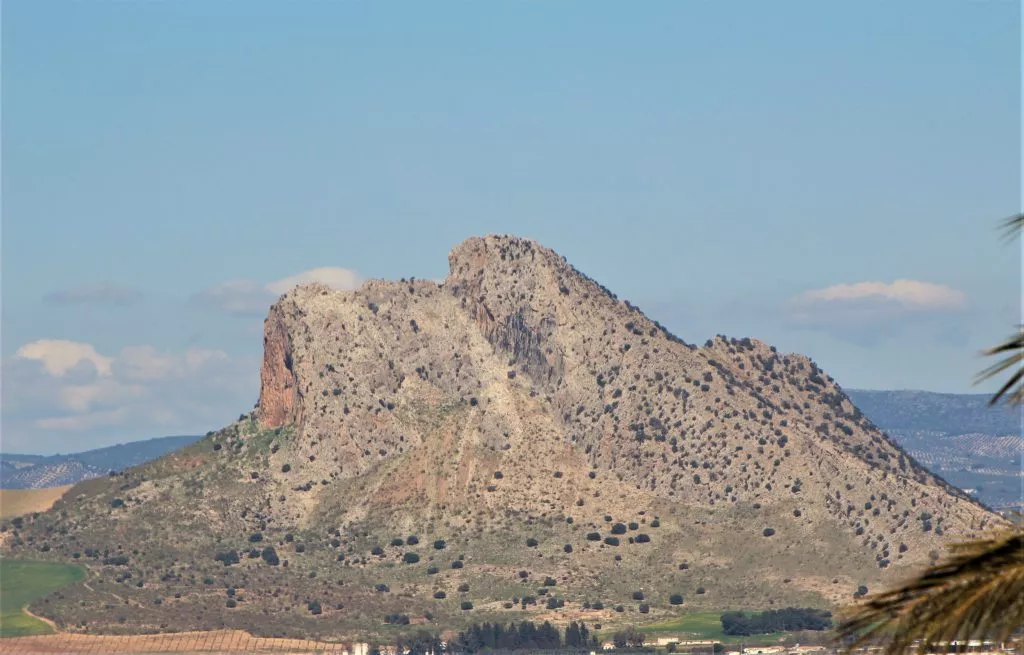
La Peña de los Enamorados means the sorrow of lovers. The name comes from a legend that tells the story of an impossible love between a young Christian man, Tello, and a young Muslim woman, Tagzona. He was a soldier of Ferdinand the Catholic and she was the daughter of the Moorish chief of Archidona.
Apart from the war, their marriage was therefore impossible. Legend has it that they preferred to climb and throw themselves off this mountain.
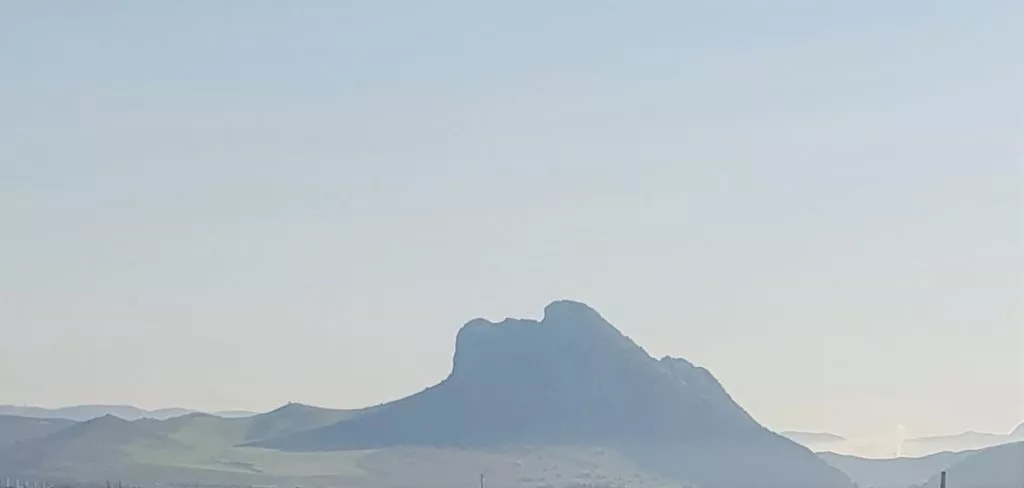
The dolmens of Antequera
These dolmens were built during the Neolithic period. These three tombs, buried under their original burial mound, are one of the most remarkable architectural works of European prehistory.
The colossal dimensions of the stones placed above the burial chambers testify to an incredible architectural ingenuity.
These megalithic structures have the appearance of a natural landscape and are buried under earthen mounds.
The museum next to the first two dolmens provides a perfect understanding of the construction of the dolmens.
The dolmen of Menga
It is believed to have been built in the Late Neolithic period, around 6000 BC. It is the most spectacular to see. In addition, it faces another natural monument: the Peña de los Enamorados (see photos).
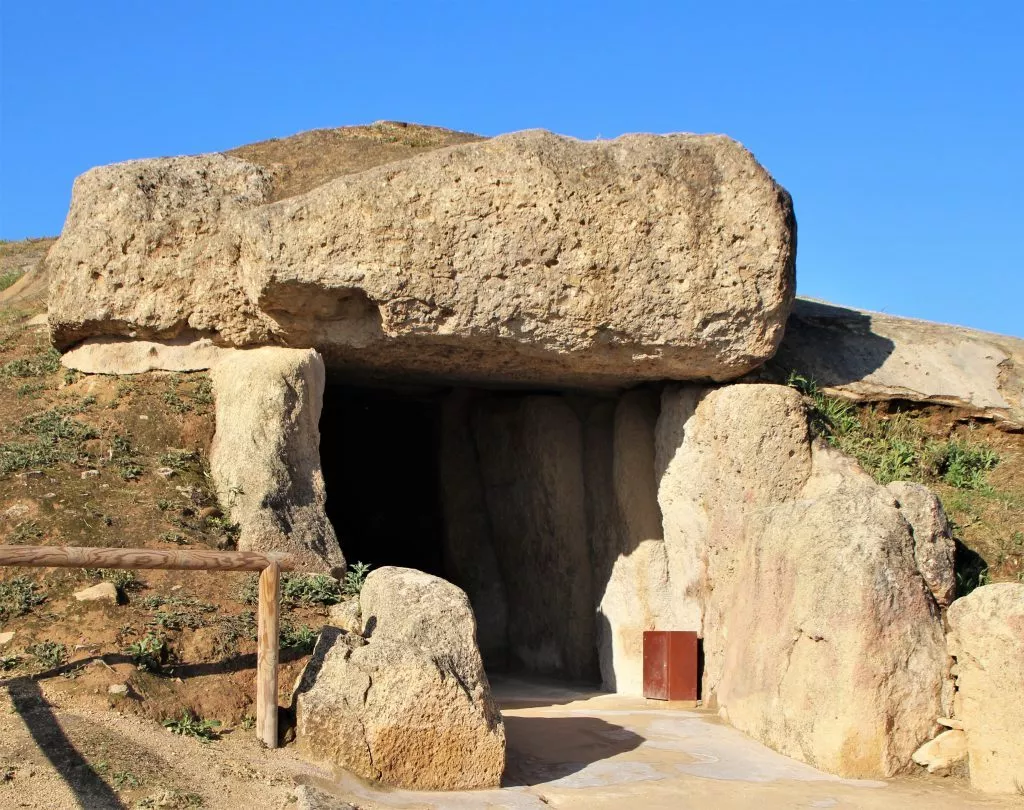
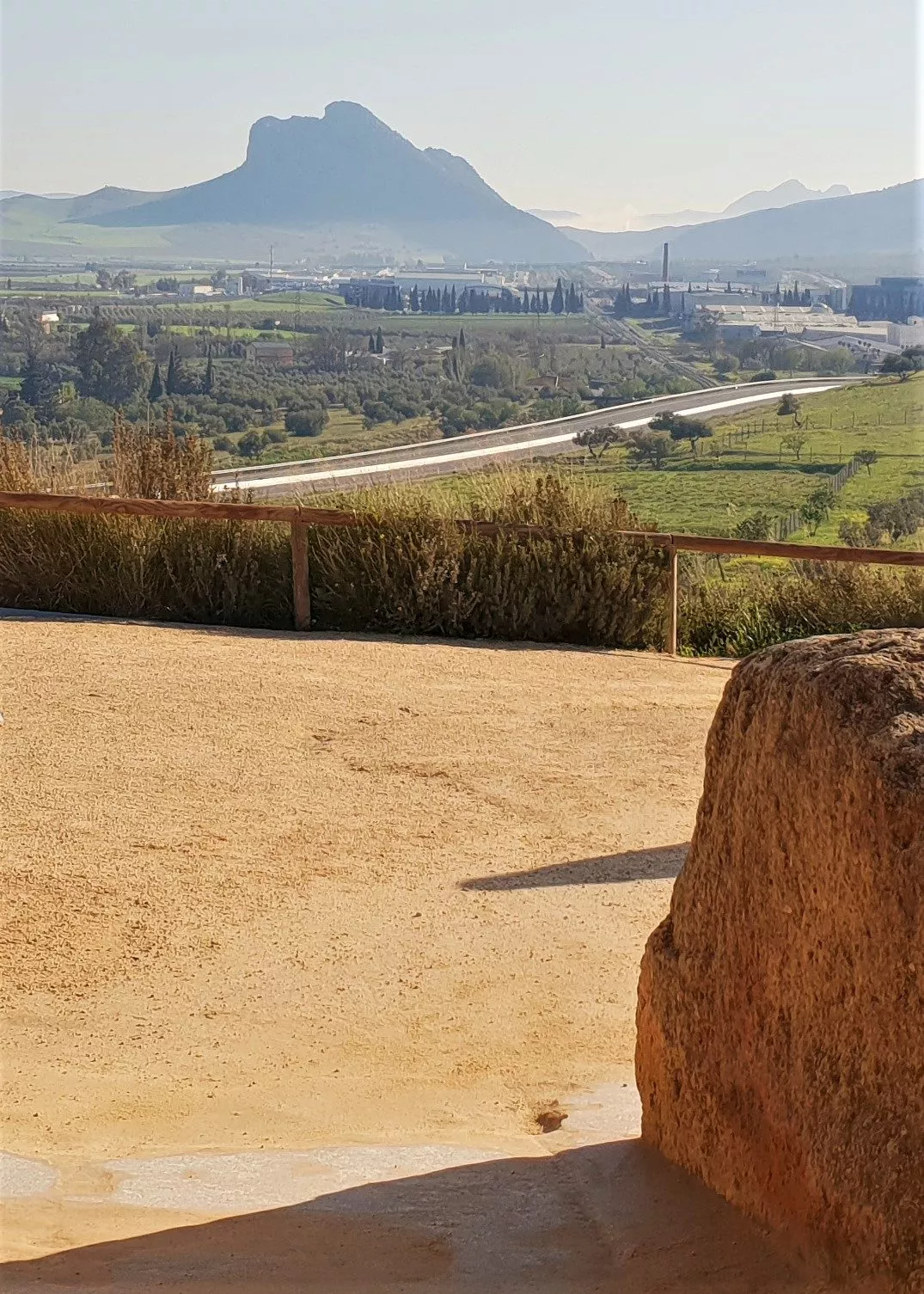
The 32 megalithic stones that make up the dolmen are placed around a main burial chamber. In the 19th century, hundreds of skeletons were discovered in this burial chamber. It is the largest dolmen at 25 metres in length.
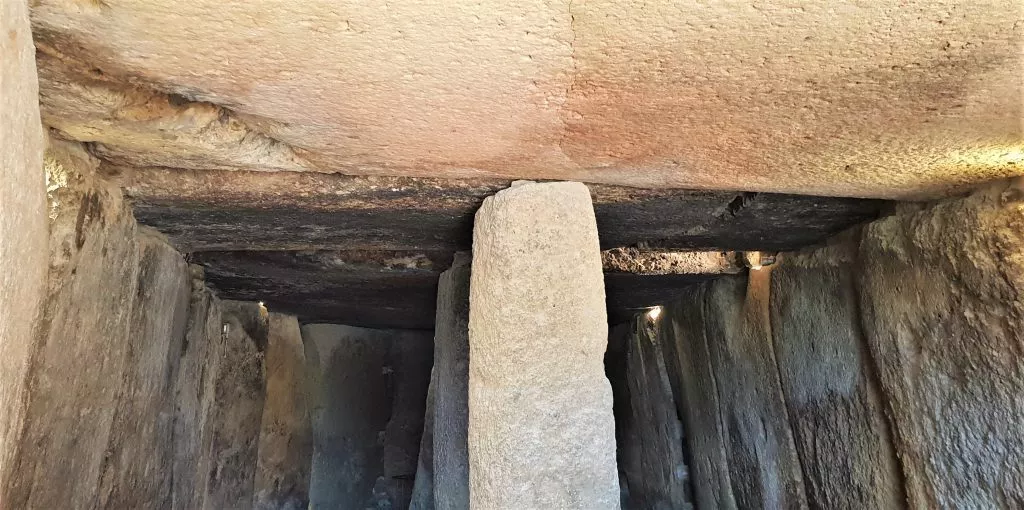
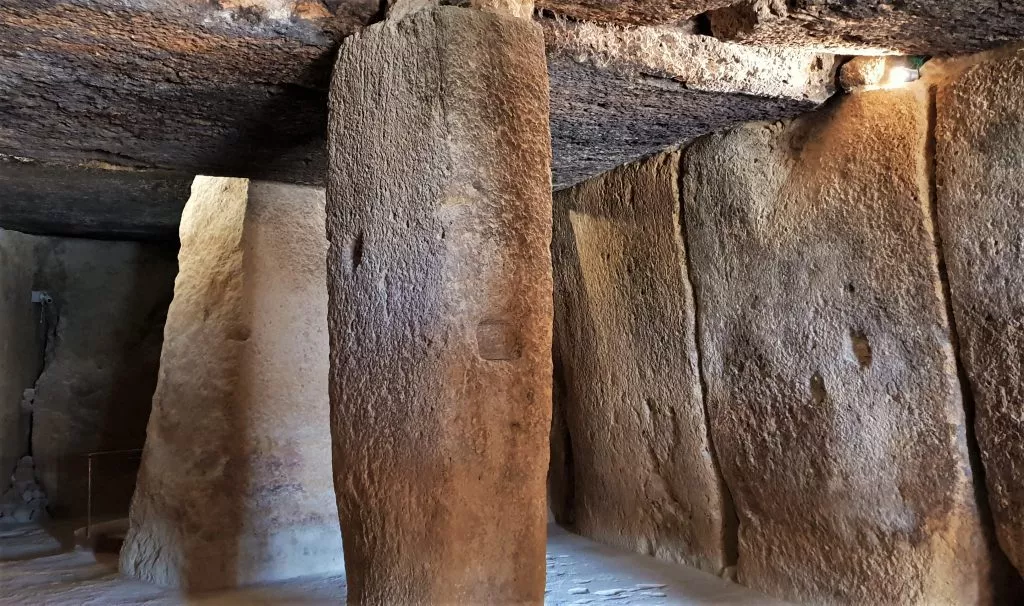
The largest megalithic stone, which covers the burial chamber, weighs 150 tons (the equivalent of over 100 cars!). There is also a 20-metre deep pit which was probably once a well.
During the summer equinox the sun’s rays penetrate the dolmen to the burial chamber.
The dolmen of Viera
It is located about 100 metres from the Menga dolmen and is also known as the “cueva chica”. It was discovered in 1903 by a person whose surname was Viera. This dolmen faces east.
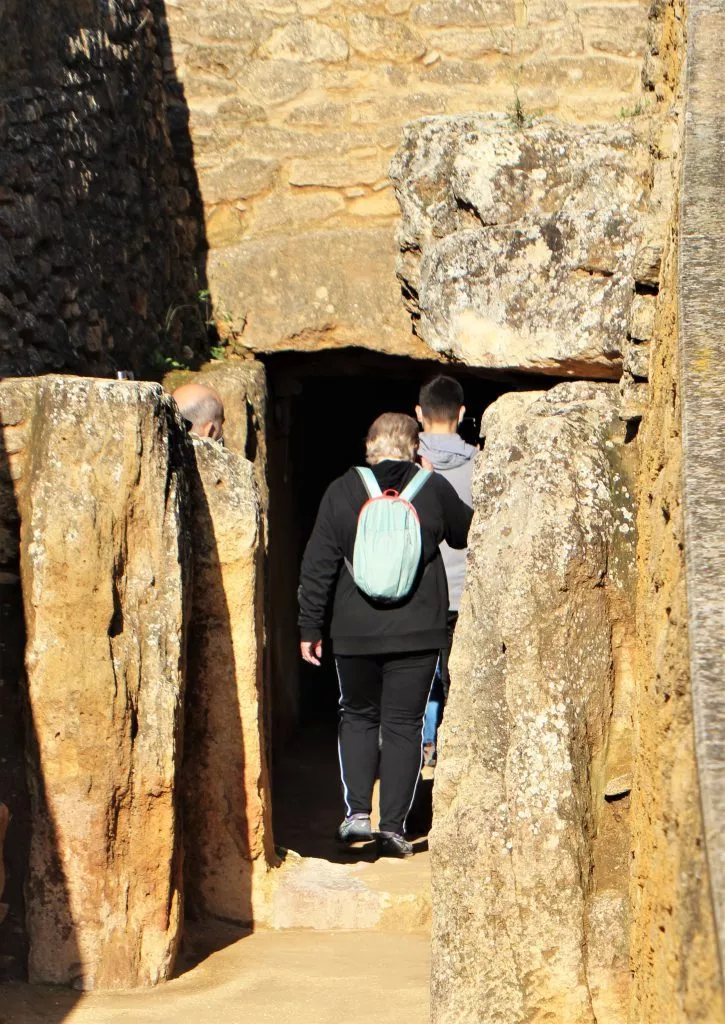
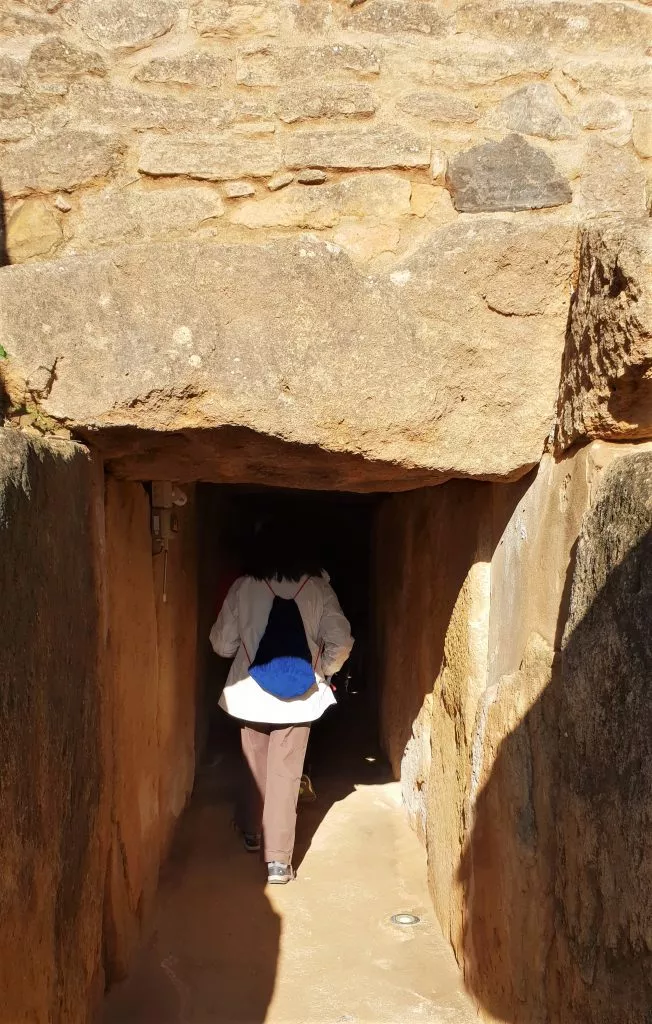
This 4,000-year-old construction consists of a long narrow corridor that leads to a rectangular burial chamber.
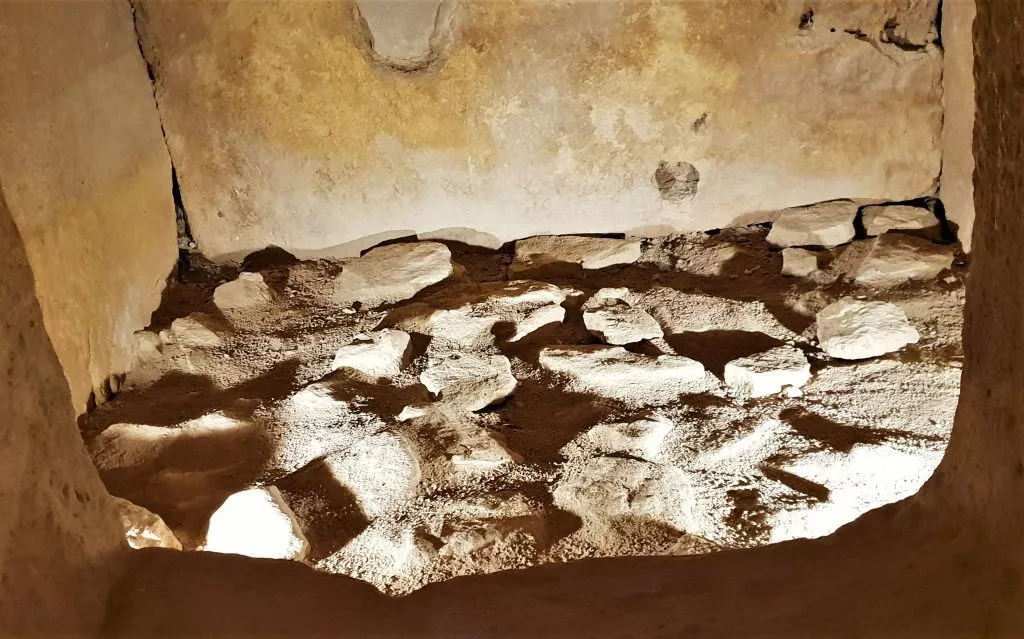
During the spring and summer equinoxes, the sun’s rays penetrate into the burial chamber.
The dolmen of Tholos, El Romeral,
It is located about 4 km from the two previous ones. This dolmen is thought to have been built in the “Late Neolithic” period, around 2500 BC.
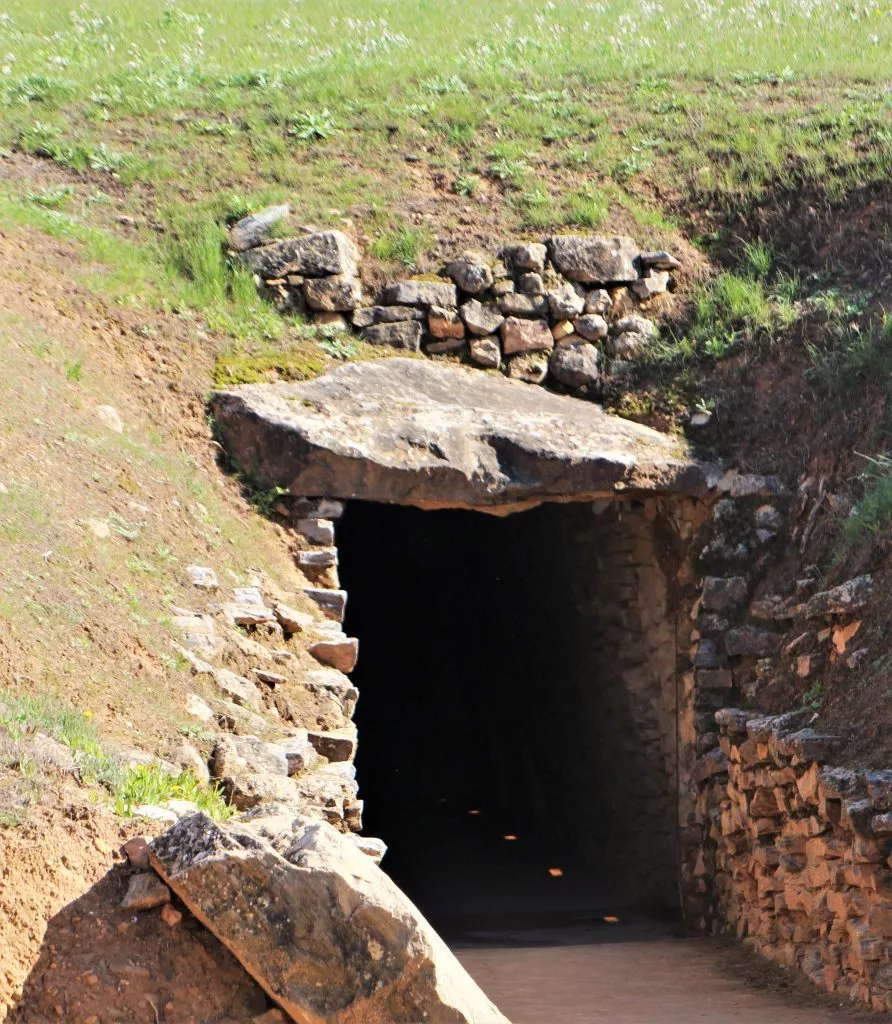
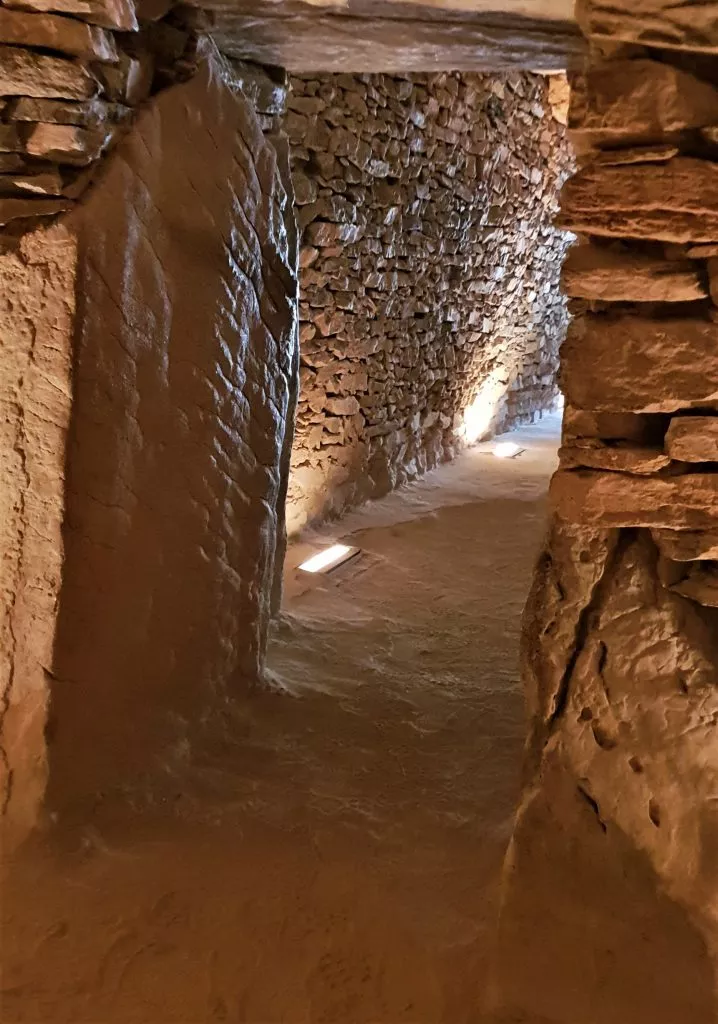
It is interesting to visit because its structure is quite different, with a false dome-shaped roof.
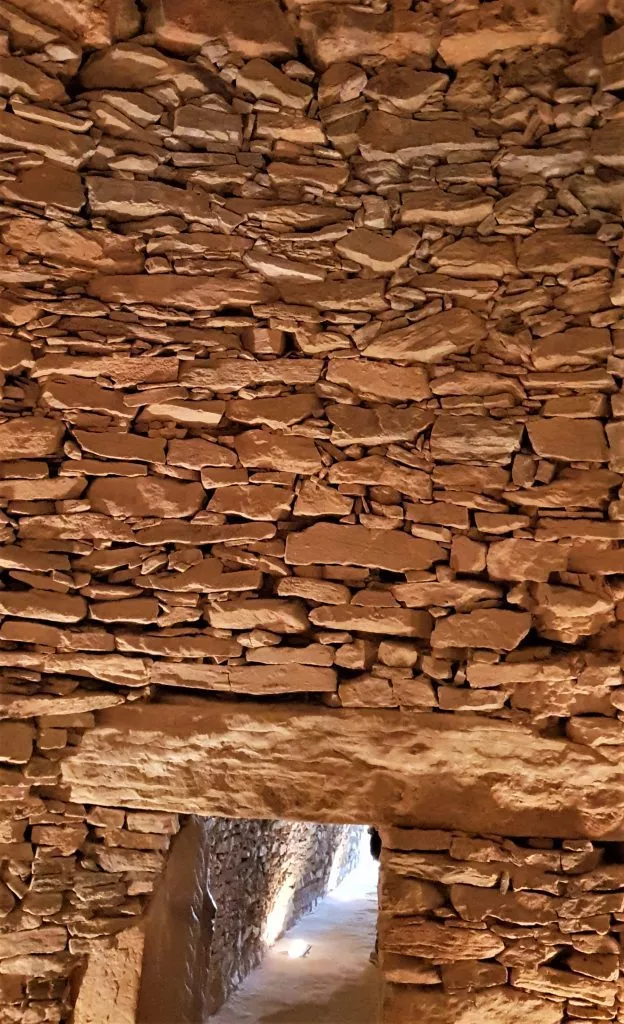
Location of Antequera and El Torcal (zoom in if necessary)
Guides offer a guided tour of El Torcal and the dolmens:
To book a tour with an English-speaking local guide : Dolmens and El Torcal de Antequera Tour. The guide, Justine, offers this tour from Antequera and Malaga.
If you are on holiday between Torre del Mar, Torrox and Nerja:
Cipriano, a local guide organises this tour: El Torcal Tour from Nerja, Torrox, Torre del Mar.
Accommodation in Antequera
What to visit next to El Torcal Natural Park?
For nature lovers, there is a splendid site not to be missed right next to El Torcal:
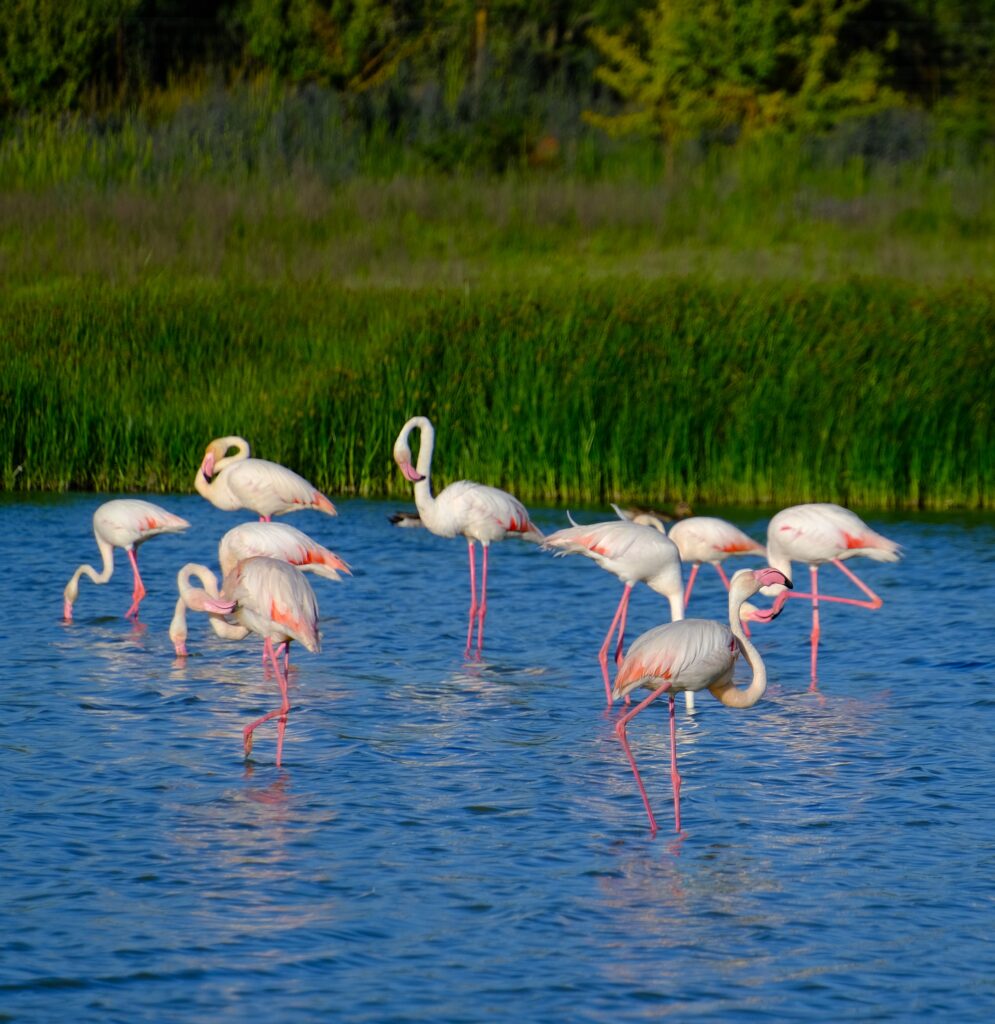
Don’t hesitate to drive 20-25km to the fabulous Fuente de Piedra Nature Reserve, to observe a multitude of birds, including pink flamingos!
A final suggestion is to visit Antequera, known as the convent town with its 33 churches!
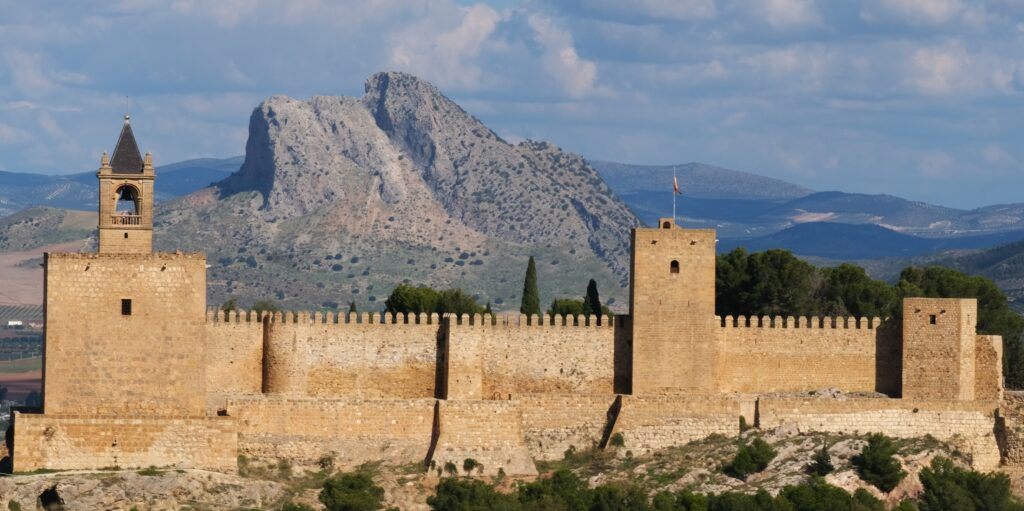
El Torcal is only 10 km from the beautiful town of Antequera.
Some useful links
Easy and economical bookings
If you are in Andalucia as part of a tour with several major cities to visit, here are some links that may be of interest:
Seville
Seville, the capital of Andalucia, is a city full of treasures to discover and monuments to visit.
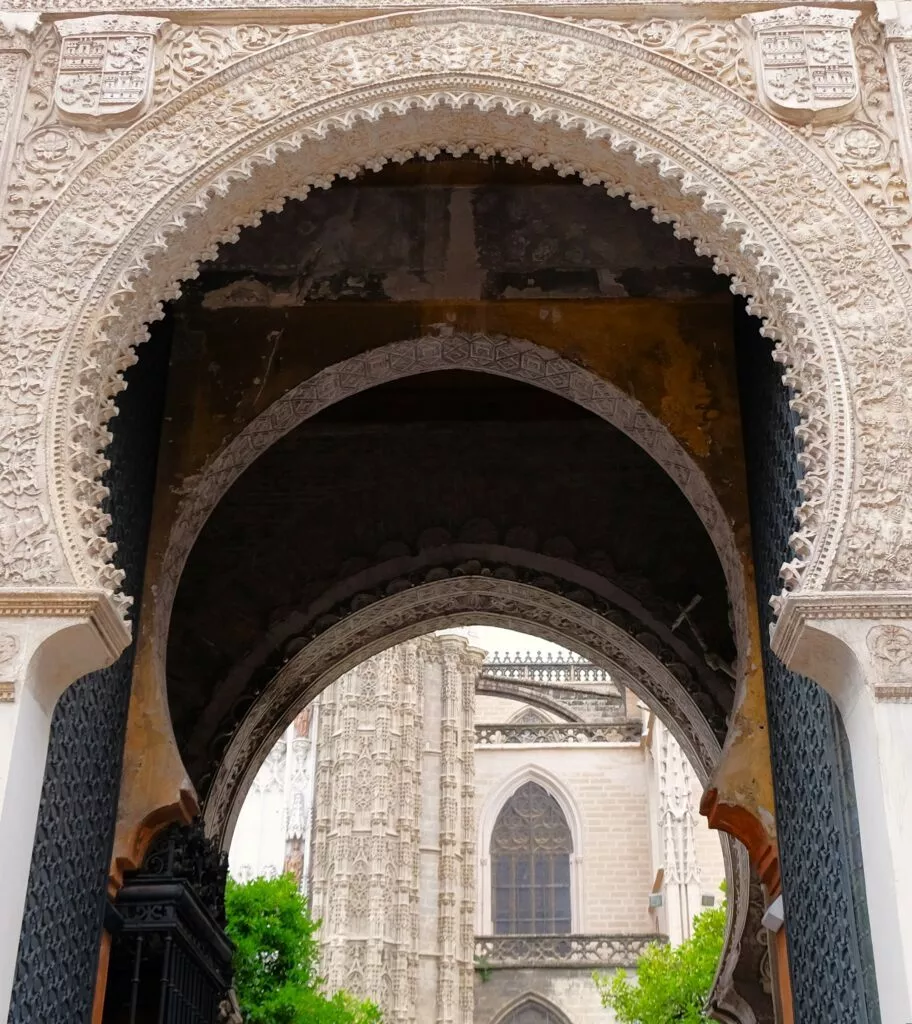
Here you will find everything you can see in Seville in 3 days. And for those who will stay longer you will also find information on secret Seville and the Santa Cruz and Triana districts.
Cadiz
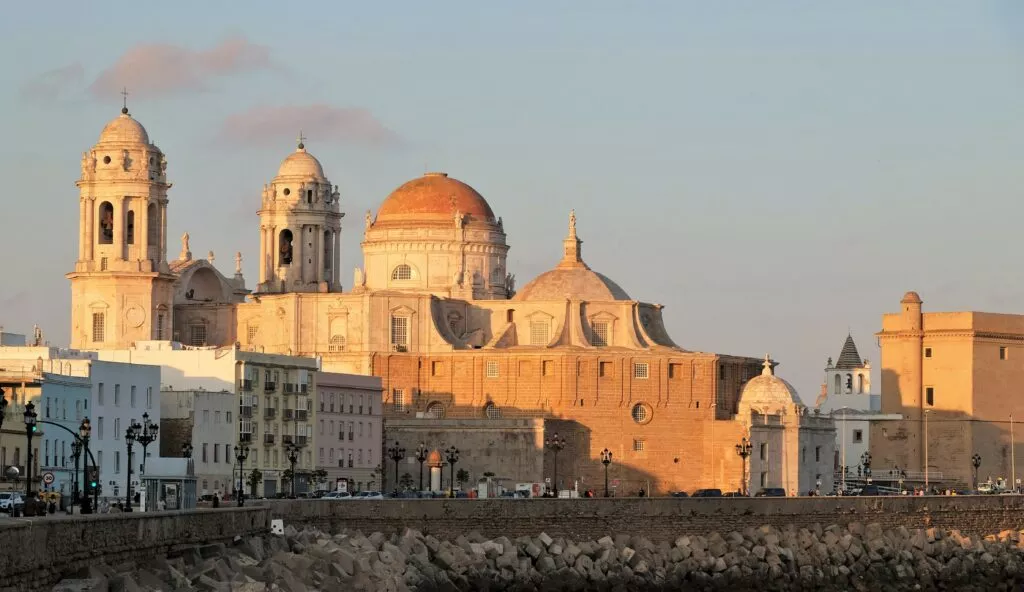
Visit Cadiz, a city with an incredible past and great beauty, on the Costa del la Luz.
Malaga
When you reach the Costa del Sol you will find in this link all must-sees in Malaga :

Granada
Discover what to see in Granada, and visit the Albaicin and Sacromonte districts:
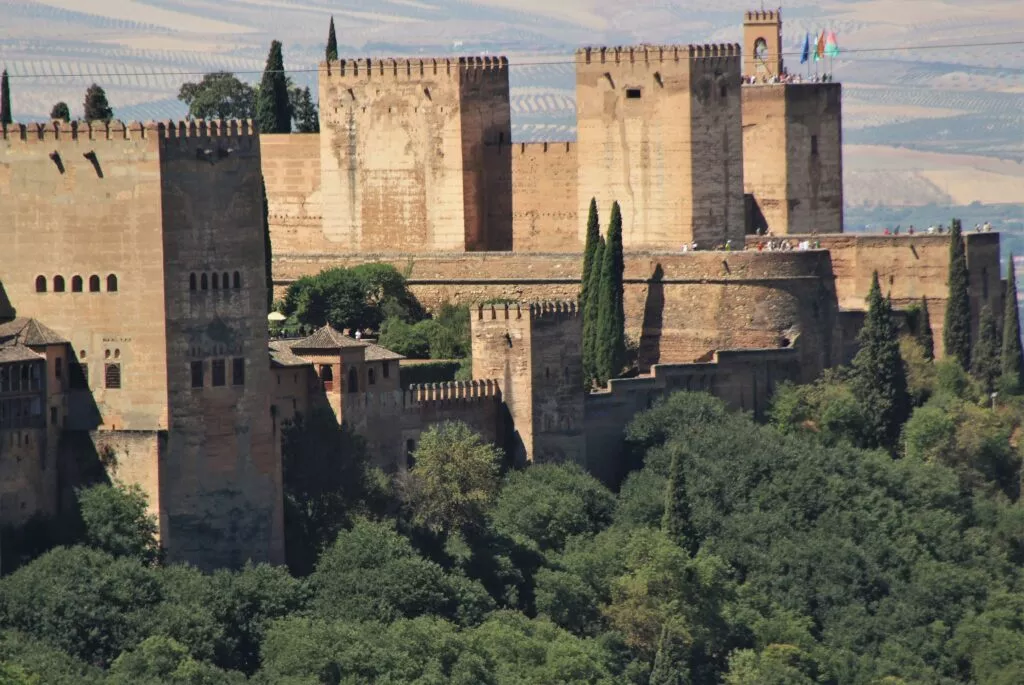
Cordoba
And of course, visit Cordoba, the caliphate city, and the Juderia district
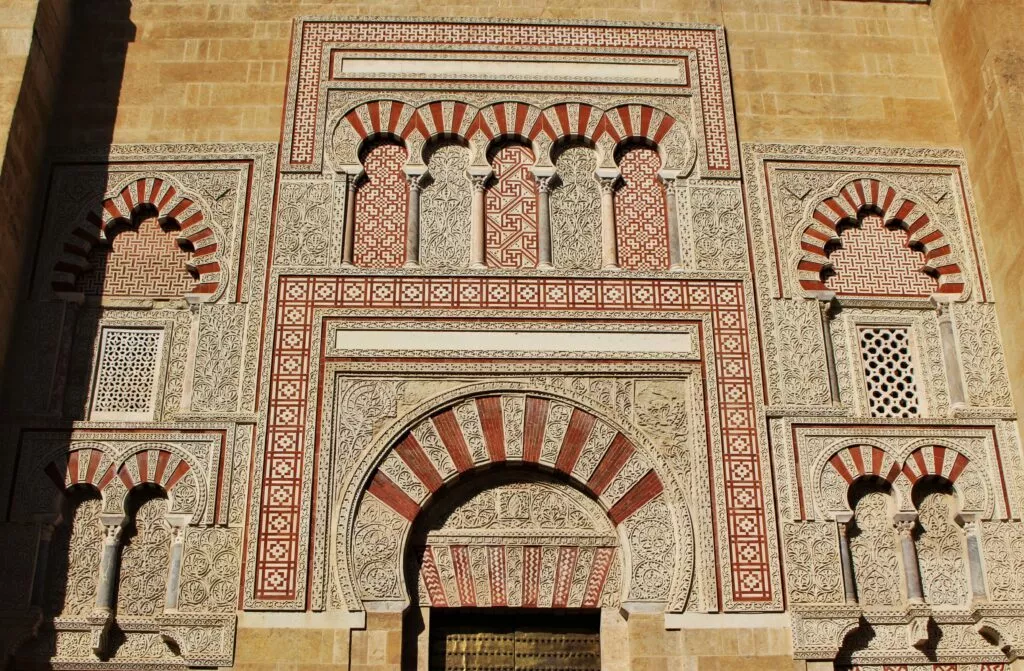
Find more ideas for visits to authentic Andalusia: see the blog pages on Andalucia.
Here is the link to receive our newsletter from the andaluciamia.com blog
(first photo, crédit photo : pathofra – Van Life Travel)
The latest articles on Andalucia
-
Interactive map of Andalucia with best places to see
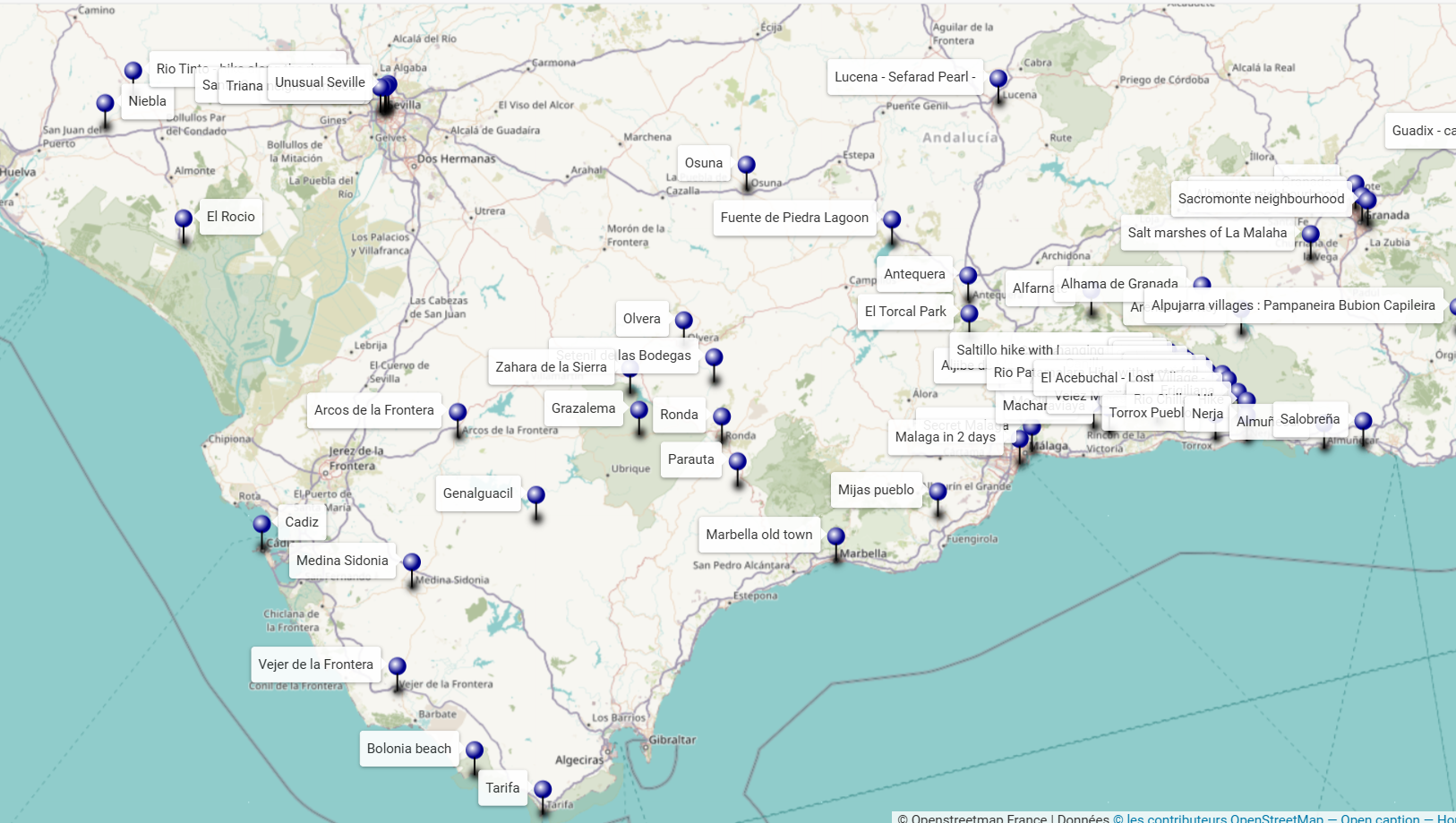
An interactive map of Andalucia to discover the sites to see around your holiday destination or to prepare a tour or road-trip.
-
Andalusia off the beaten track : 18 gems
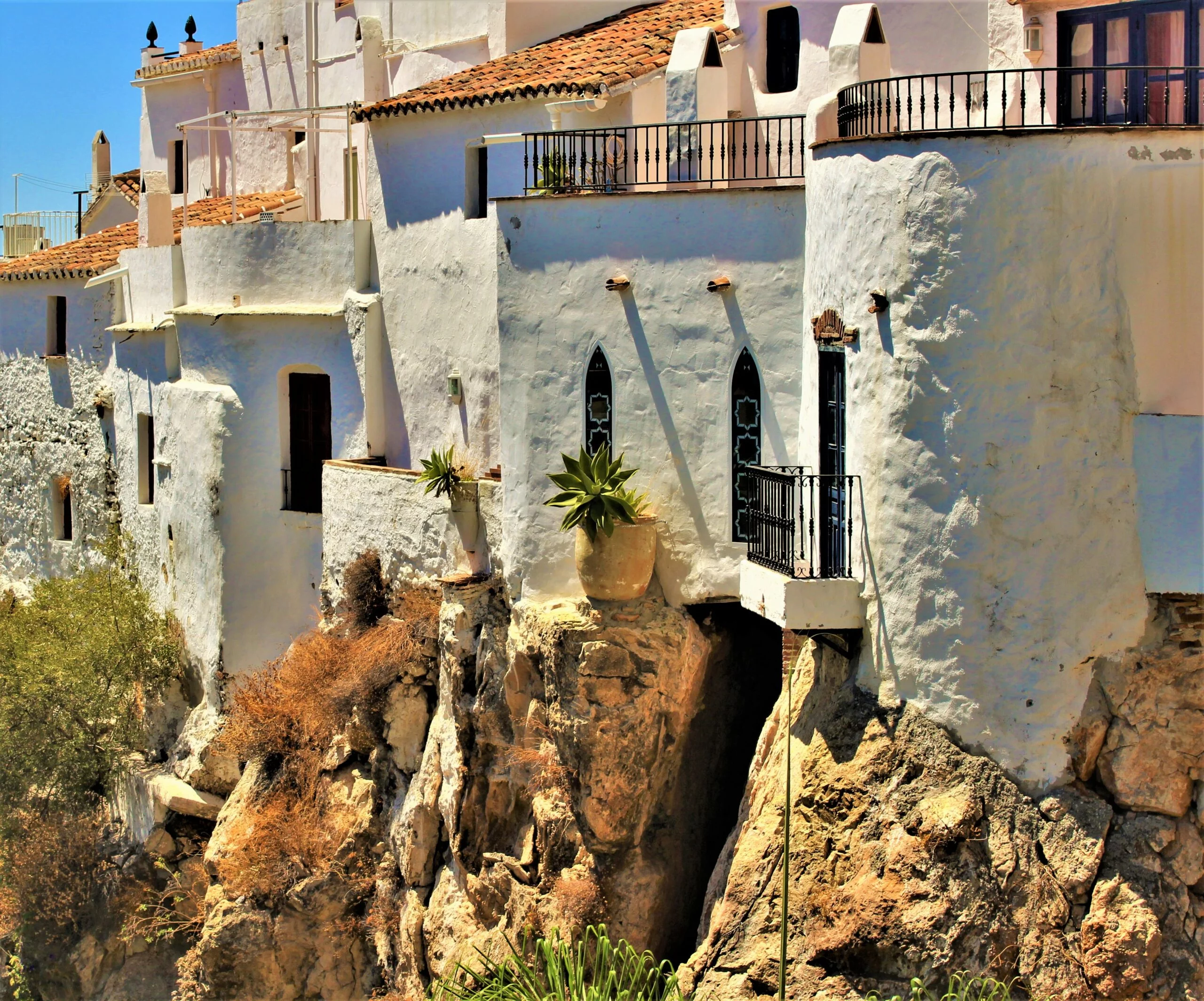
Let’s immediately set off to discover an Andalusia off the beaten track. There are many wonders to discover.
-
19 Most beautiful white villages in Andalusia
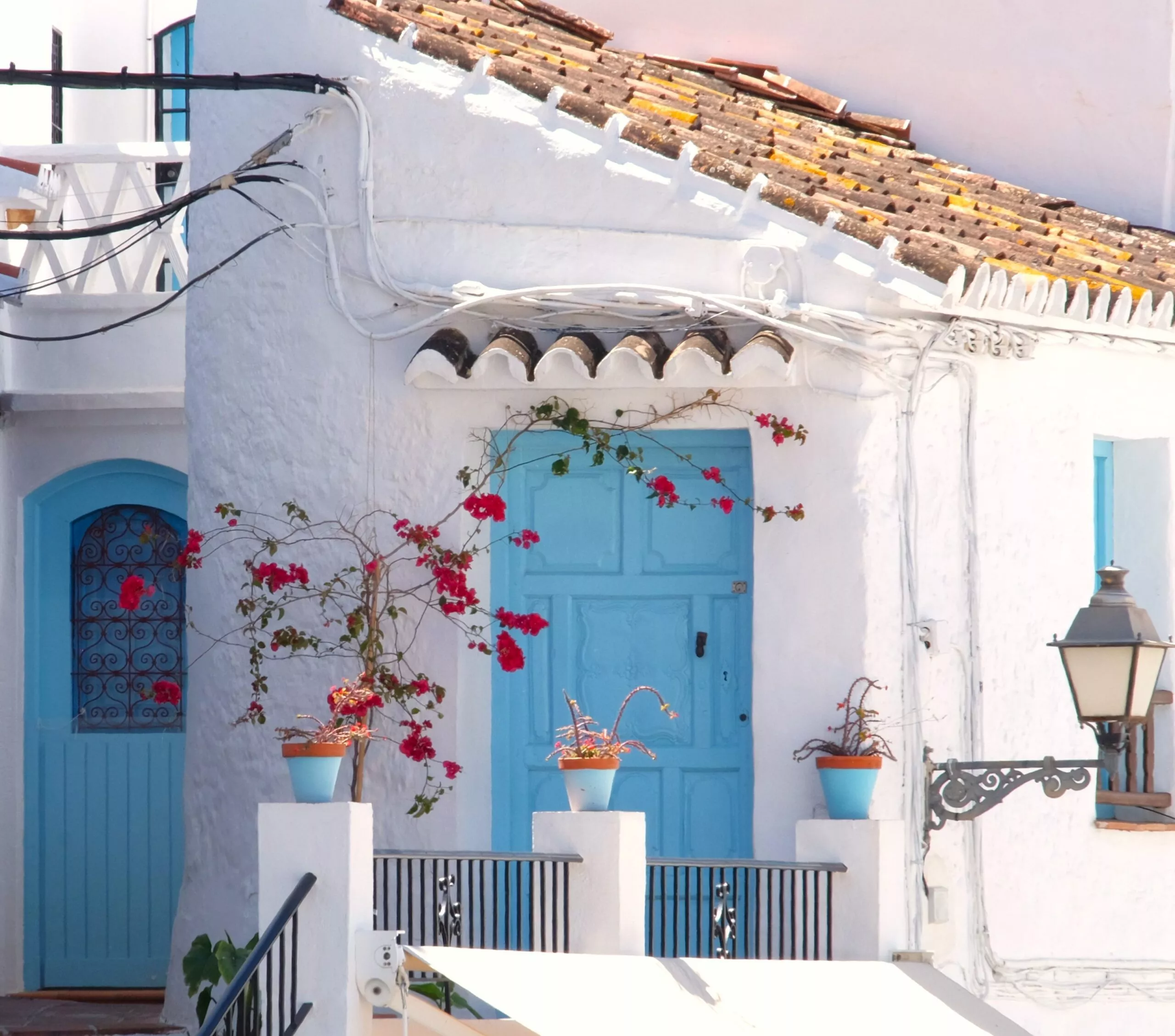
Discovering the most beautiful white villages of Andalusia. These villages are the only ones to be part of the Pueblos más bonitos de España.
-
Unusual Andalusia – 15 Very Surprising Places –
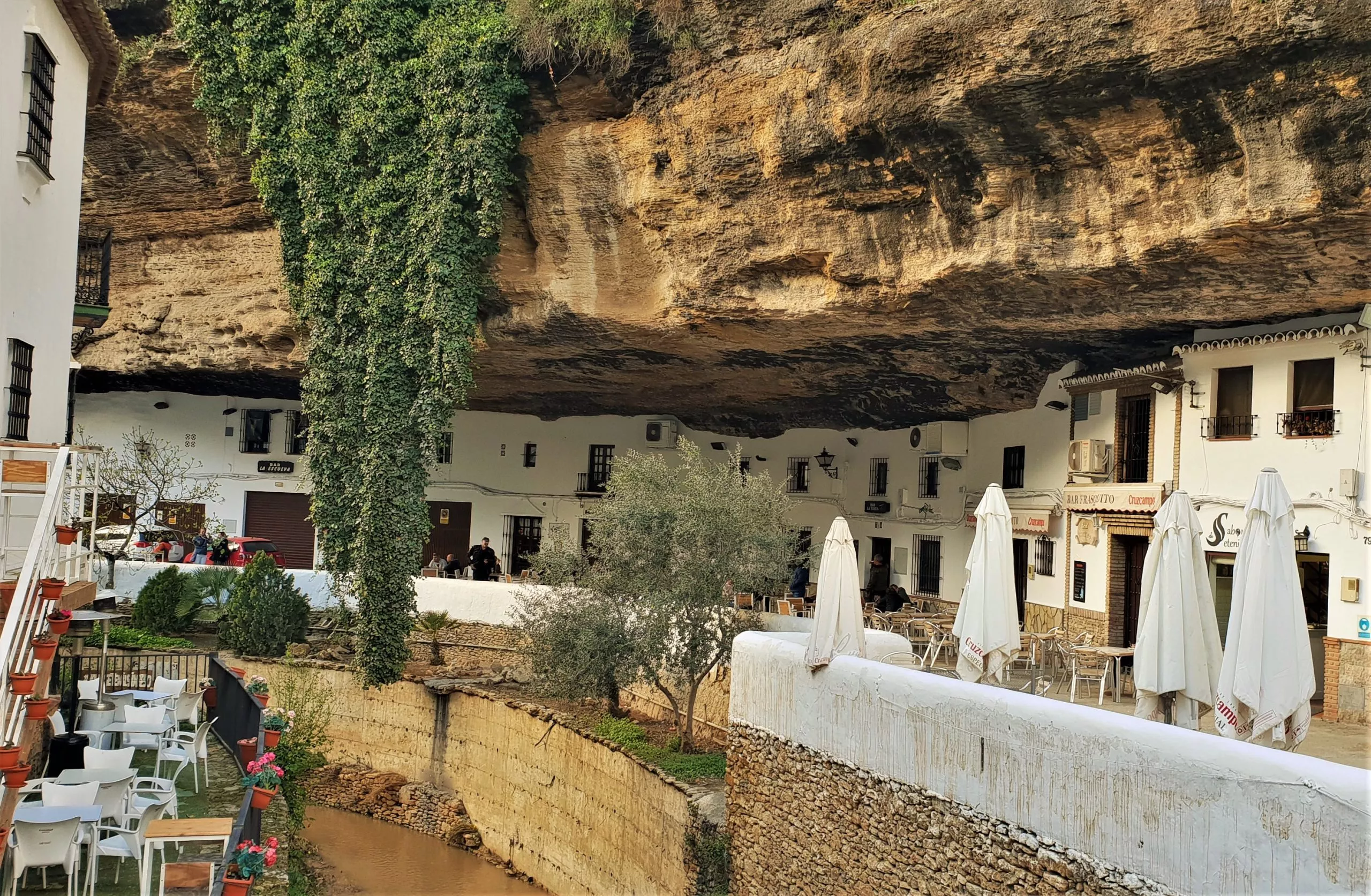
Unusual Andalusia: discover the most surprising and wonderful places in southern Spain.
